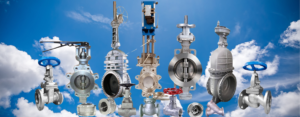
A steam trap is a type of valve, also known as a trap or drain, that removes condensate, air and carbon dioxide gas from a steam system as quickly as possible, while automatically preventing steam leakage to the maximum extent possible. There are many varieties of traps, each with different properties.
- Discharge condensate as soon as it is formed to avoid pooling and water hammer.
- Prevents loss of fresh steam, thereby reducing overall steam generation and energy costs.
- Remove air and other non-condensable gases for fast start-up and efficient heat transfer, and to avoid erosion and corrosion in steam piping.
1. Free Float® Steam Traps
Free float steam traps use the principle of buoyancy, the float according to the amount of condensate, with the change in water level and lifting, automatic adjustment of the valve seat hole opening, continuous discharge of condensate, when the condensate stops coming in, the bottom of the float drop, back to the closed position, the drainage stops, due to the drainage of the valve seat hole is always below the level of condensate, the formation of a watertight, natural separation of water and gas, to achieve no steam leakage.
2. Diaphragm Traps
The main action element of the Membrane Box Steam Trap is the metal membrane box, which is filled with a liquid whose gasification temperature is lower than the saturation temperature of water.
When the trap is first activated, low-temperature condensate appears in the piping, and the liquid inside the diaphragm box is in a condensing state. The valve is in the open position. When the condensate temperature gradually rises, the liquid inside the membrane box starts to evaporate, the pressure inside the membrane box rises, the diaphragm drives the valve core to move in the closing direction, and the trap closes completely before the condensate reaches the saturation temperature. The membrane box controls the valve switching along with the change of the steam temperature, and it plays the role of a steam drainage barrier.
3. Inverted Bucket Traps
An inverted bucket trap has an inverted bucket as a level-sensitive device, with the bucket opening downward and the inverted bucket connected to a lever to drive the valve centre to open and close the valve. The inverted bucket trap can discharge air, is not afraid of water shock, and has good anti-fouling performance. It has a small degree of subcooling, a leakage rate of less than 3%, a maximum back pressure rate of 75%, more connections, and less sensitivity than the Free Float® trap. Because the inverted bucket trap relies on the upward buoyancy of the steam to close the valve, it is not suitable for use when the operating differential pressure is less than 0.1 MPA.
4. Bimetal Steam Traps
Bimetal steam traps are operated by a bimetal temperature sensing element that drives the valve core to switch the valve on and off.
When the device is first activated, low-temperature condensate appears in the pipeline, the bimetal is spreading, and the valve spool is in the open position under the spring force. When the condensate temperature rises gradually, the bimetal temperature sensing element starts to bend and deform, and pushes the valve core to the closed position. The trap closes completely before the condensate reaches saturation temperature. High-temperature condensate is always present in front of the valve, and there is no steam leakage, resulting in good energy conservation.
5. Thermodynamic Traps
Thermodynamic traps are very strong and simple traps. This trap operates by the power generated when flash steam passes through the trap.
During the start-up phase, the disc is lifted due to pressure, and condensate and air are discharged over the inner seat through the lower part of the disc and through three small holes in the peripheral outlet. The thermodynamic trap contains a movable disc, which is both a sensitive part and an actuator. According to the different thermodynamic principles of flow rate and volume change of steam and condensate when passing through, different differential pressures are generated above and below the valve disc, which drives the valve disc to open and close the valve.
IV. Steam Trap Anti-Freezing Measures
As long as steam passes through a properly selected and installed trap, there will be no freezing problems. However, if the steam is broken, steam condensate will form a vacuum in the heat exchanger or companion pipe. This prevents the condensate from being freely discharged from the system before freezing occurs.
Therefore, install a vacuum breaker between the equipment being discharged and the trap. If gravity discharge is not used from the trap to the return line, the trap and discharge line should be manually discharged or automatically discharged using a discharge line with freeze protection. Additionally, when multiple traps are installed together in a trap station, insulating the traps can prevent freezing.
- Do not select traps that are oversized.
- Keep trap discharge lines as short as possible.
- Slope the trap discharge line downward to accelerate gravity discharge.
- Insulate the trap discharge line and condensate return line.
- When the condensate return line is exposed to atmospheric conditions, consider adding heat tracing.
- If the return line is elevated, the vertical discharge pipe should be adjacent to the discharge pipe on the upper part of the return collector and insulate the discharge pipe together with the trap discharge pipe.






